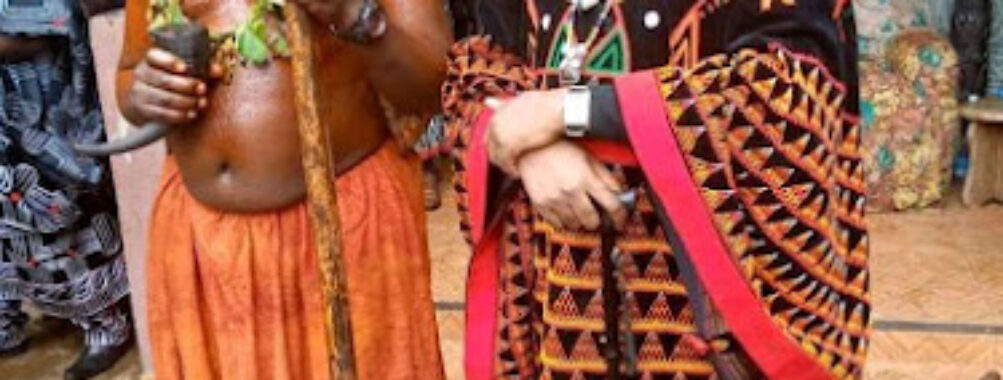
Mankon Museum
Table of Contents
Description
The Mankon Museum sits as a focused, community-run repository of the history and cultural life of the Mankon people in the northwest region of Cameroon. It is not a sprawling national museum with marble halls; rather, it feels like a carefully tended room where stories live in objects: carved masks, ceremonial regalia, stools and throne pieces associated with the fon, and other traditional items from the Bamenda Grassfields. The layout and displays emphasize context—who made an object, how it was used, and what it meant in the social life of the kingdom—so visitors leave with a sense of the living practices behind the art, not just shiny artifacts behind glass.
Visitors should expect a mix of preserved pieces and contemporary community interpretation. Panels and guides connect historical narratives to present-day Mankon, explaining lineage, local governance around the fon palace, and how ritual objects mark significant life events. The museum leans into its role as a community museum—conservation and education are priorities, and the tone is often conversational rather than academic. That makes it ideal for travelers who want to understand the region beyond a quick snapshot. Kids tend to do well here because the objects tell stories; adults who enjoy a slower, narrative-based museum experience will too.
It is worth noting that the Mankon Museum balances preservation with accessibility. The entrance and restrooms are wheelchair accessible, which is a deliberate choice by the caretakers to welcome a range of visitors. Practical facilities include restrooms on site, but travelers should not expect a full-service visitor center or an on-site restaurant. Services are modest, and the museum’s strength is its collection and the people who maintain it rather than extra amenities.
There is an honest, human scale to the place. Some visitors come expecting a major regional attraction and find the museum smaller than anticipated; others are surprised by the depth and intimacy of the displays. In other words, the museum rewards attentiveness. Stand a little longer in front of a carved mask and read the accompanying notes about its social use, or ask a guide about the story behind a Fon’s stool; those moments reveal far more than a superficial walkthrough.
Practical-minded travelers will appreciate that the museum often recommends getting tickets in advance, especially during local festivals or tourist seasons. It helps prevent disappointment because groups and school visits can fill the small space. The museum also welcomes family visits—interpretation is accessible to children and educators often incorporate hands-on elements when possible, so it genuinely is good for kids who like stories and tactile learning.
For those interested in wider research or deeper context, the museum functions as a gateway to the surrounding cultural landscape. The Mankon Fon palace and nearby traditional sites provide complementary perspectives—if a traveler wants to see ritual architecture, public stools, or the spatial layout of a traditional compound, a short visit beyond the museum walls will add layers. That interplay between museum objects and living sites is one reason many people include Mankon Museum on a multi-stop itinerary through the Grassfields.
On a slightly frank note: signage and labeling are sometimes basic. This is a community-focused institution and resources for interpretive design are limited, so explanatory text varies in depth and language. But that can be a feature, not a bug—there are often friendly, knowledgeable people around who will explain things in English or in local languages, and conversations can fill gaps that sterile panels never could. Bring curiosity, be prepared to ask questions, and accept a little improvisation. It makes the visit feel real and human.
Conservation is an ongoing concern here. The museum actively works to preserve wooden carvings and textiles that are subject to humidity and time. Visitors who care about heritage management will find the museum’s efforts interesting: simple conservation techniques, community involvement in caring for objects, and educational projects aimed at younger residents so traditions continue. Those behind the museum are proud of that work, and they often welcome visitors who show genuine interest in how cultural heritage is preserved locally.
In short, the Mankon Museum offers a compact but meaningful window into Mankon history and culture. It is best approached slowly and with questions. Expect attentive local interpretation, accessible facilities, and a museum experience shaped by community priorities rather than tourist industry polish. People who come looking for stories rather than spectacle will leave satisfied; those seeking high-tech displays or large-scale galleries may need to temper expectations. Still, this museum has a way of lingering in the mind—an elaborately carved mask, a fon’s stool, a simple explanation of a rite—that often becomes the highlight of a trip through the northwest region of Cameroon.
Location
Places to Stay Near Mankon Museum
Find and Book a Tour
Explore More Travel Guides
No reviews found! Be the first to review!